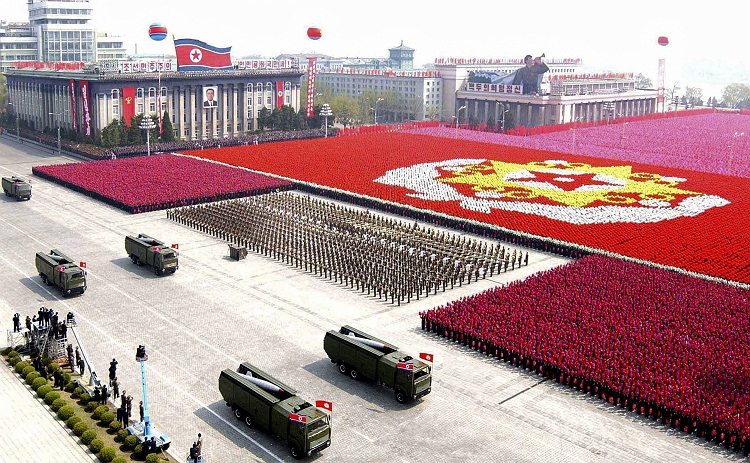A South Korean source says there’s been a sharp increase in personnel and vehicle movement at the North’s mid- and long-range missile sites as tension on the divided peninsula rises.
The revelation, which the Yonhap news agency attributes to an unidentified South Korean military official, came after North Korean leader Kim Jong-Un ordered preparations for strategic rocket strikes on US targets following US stealth bomber training runs over South Korea.
US Defence Secretary Chuck Hagel says Washington won’t be cowed by Pyongyang’s bellicose threats and stands ready to respond to any eventuality.
Mr Kim directed his rocket units on standby to strike at the United States and its Pacific bases at an overnight emergency meeting with top army commanders.
Mr Kim says the time has come to settle accounts with the United States, but experts doubt that North Korea has the capability to strike at the US mainland.
Earlier, the United States warned the danger from North Korea was rising and that Washington was ready for “any eventuality” after flying two nuclear-capable B-2 stealth bombers over ally South Korea.
The US defied North Korean threats of retribution and took the rare step of announcing that the state-of-the-art jets flew from the US for the exercises.
Mr Hagel, dismissing suggestions that the B-2 mission could aggravate tensions, said the US was committed to “unequivocally defend” South Korea as well as Japan.
“We will be prepared – we have to be prepared – to deal with any eventuality,” Mr Hagel said at the Pentagon on Thursday. “We must make clear that these provocations by the North are taken by us very seriously and we’ll respond to that.”
The two B-2s flew 20,800 kilometres from Whiteman Air Force Base in Missouri and back without stopping after demonstrating a precision strike by dropping ordnance on a target range in South Korea.
In response, North Korean leader Kim Jong-un ordered preparations for rocket strikes on the US mainland and military bases in the Pacific and South Korea.
The order was issued at an overnight emergency meeting with top army commanders.
In the event of any “reckless” US provocation, North Korean forces should “mercilessly strike the US mainland … military bases in the Pacific, including Hawaii and Guam, and those in South Korea”, he was quoted as saying by the official Korean Central News Agency.
The flight came as part of annual drills between the United States and South Korea, which North Korea each year denounces as preparations for war but which have drawn particularly fierce criticism this time.
In recent months North Korea, under its young leader, has launched a long-range rocket, tested a third nuclear bomb and threatened destruction of US bases in the region and attacks on the US mainland.
Mr Kim argued that the stealth bomber flights went beyond a simple demonstration of force and amounted to a US “ultimatum that they will ignite a nuclear war at any cost”.
Present at the emergency meeting on Thursday were the head of the Korean People’s Army chief of general staff, director of operations and commander of strategic rocket operations.
Despite the furious reaction, Pyongyang has been careful not to allow tensions to affect the Kaesong Industrial Complex, a joint South-North venture that provides the regime crucial with hard currency.
Pyongyang announced on Wednesday that it was severing its military hotline with South Korea, saying it was no longer needed, given that “war may break out any moment”.
The severed military hotline had been used on a daily basis to organise movements in and out of the zone, which lies 10 kilometres into North Korea and was set up during a period of reconciliation.
North Korea has cut off the hotline before, most recently in March 2009, but the line was reconnected less than two weeks later.










